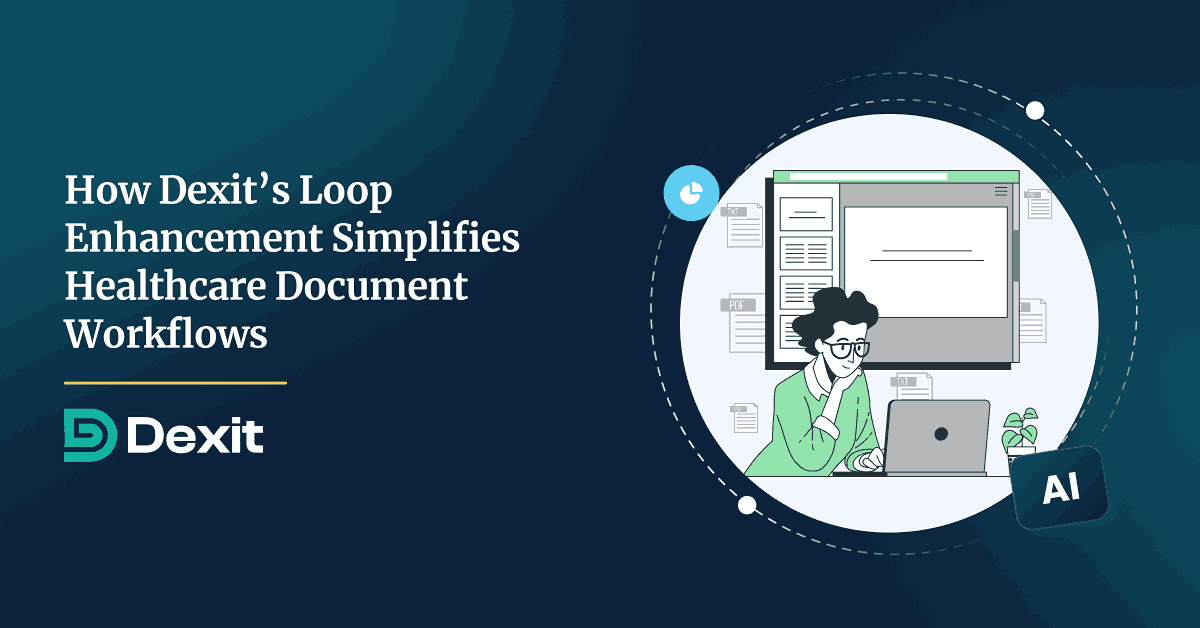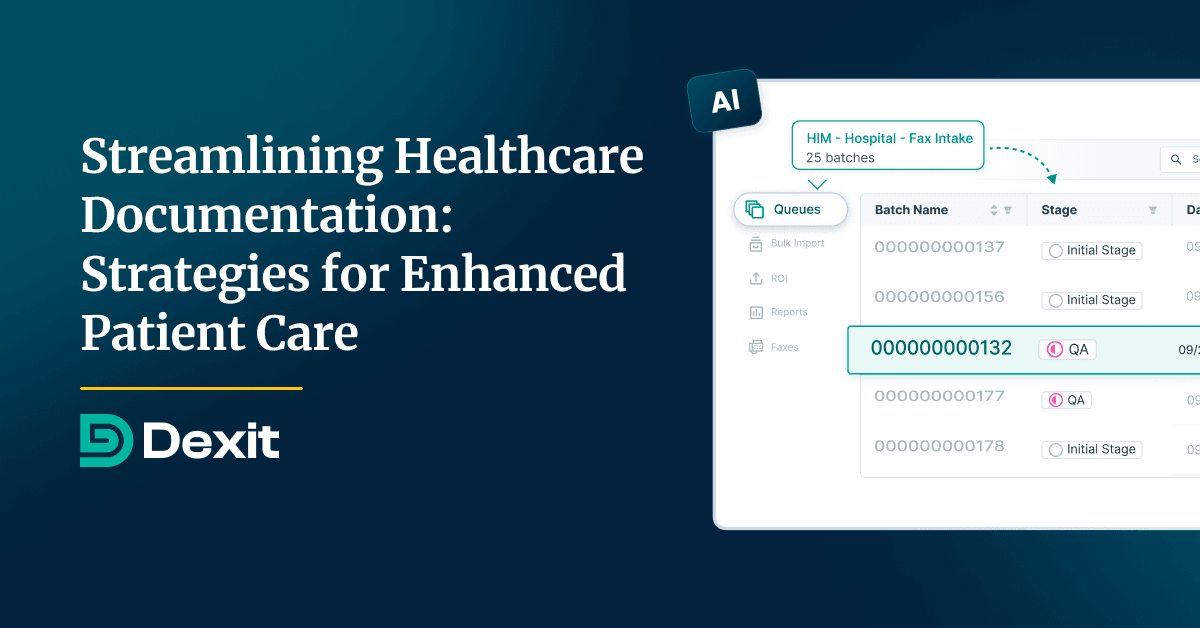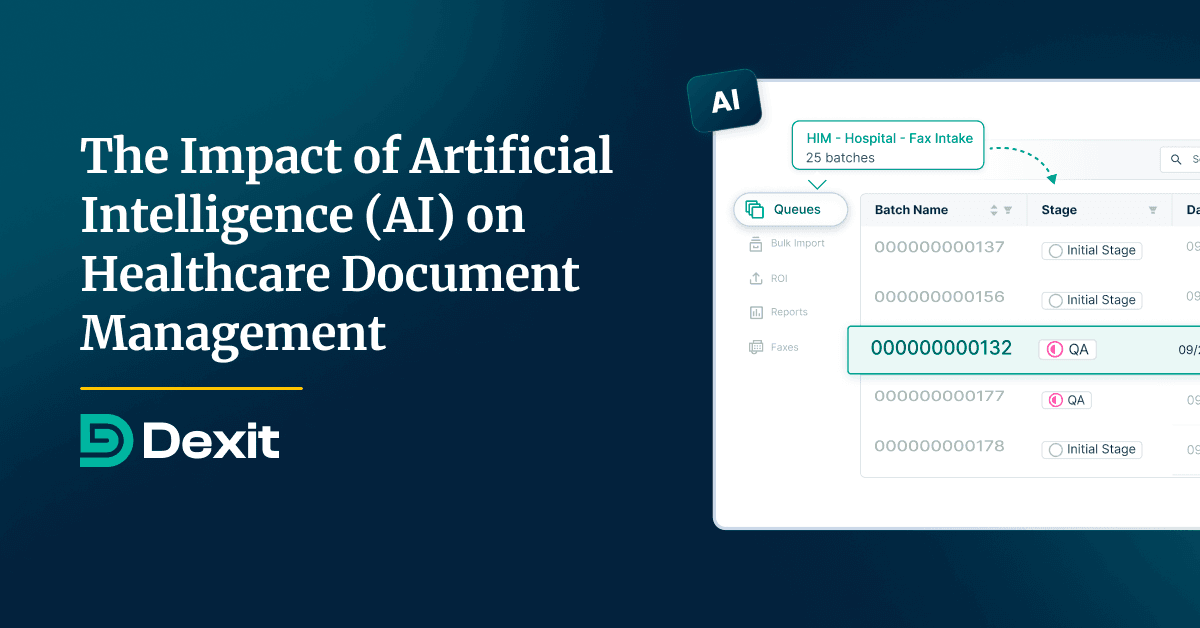
Enhancing Patient-centric Care Through Improved Healthcare Document Management
In the rapidly evolving healthcare landscape, where patient outcomes and personalized care are paramount, the …

Healthcare document management can be painfully repetitive. From classifying documents and faxes to updating metadata across batches of clinical notes, these tasks are often slow, error-prone, and exhausting.
In an era powered by AI and digital automation, handling these time-consuming tasks manually just doesn’t add up. That’s where Intelligent Document Processing (IDP) solutions like Dexit come in.
What sets Dexit apart? In addition to its already powerful features—like automated routing, AI-driven patient identification, and robust workflow automation—it now introduces a new innovation: the loop enhancement, adding yet another feather to its cap.
Built into Dexit’s no-code workflow canvas, this feature is tailor-made for healthcare teams who need to process high document volumes with precision and speed. Let’s break down what this new feature does, how it works, and how it can transform your document workflows.
Explore:
Looping is a programming concept that makes document automation smarter and far more efficient.
In Dexit, a Loop Step allows users to perform repetitive actions on a collection of items (like documents), without needing to manually repeat each step. It iterates through the list, document by document, and performs defined actions based on logic or rules you set.
Say you have 300 patient intake forms that need metadata updates - like ‘document type’, ‘encounter ID’, or ‘uploaded by’. Rather than updating each one individually, you can loop through the batch and apply your logic dynamically, using machine learning predictions or predefined conditions.
In a typical hospital or clinic, the document volume is staggering: lab results, referral forms, consent documents, scanned faxes, discharge summaries—you name it. And each file must be accurately classified, tagged, and routed.
Manual handling of this information isn’t just tedious—it’s risky. Errors in document attributes can lead to compliance issues, billing delays, or worse, clinical mishaps.
By using Dexit’s Loop Step, healthcare teams can:
Dexit’s workflow canvas makes automation feel natural—even for users without a technical background. The new ‘Loop Enhancement’ adds powerful, batch-processing capabilities to your workflows, allowing you to handle large volumes of documents with precision and ease.
Here’s how it fits into a typical automation flow:
The versatility of the ‘Loop Step’ makes it ideal for many scenarios in healthcare:
1. Metadata Normalization
Loop through large batches of documents—like scanned records from various departments—and automatically standardize key fields such as ‘document type’ or ‘encounter ID’. This reduces inconsistencies and prepares data for downstream systems.
2. AI-powered Tagging
Combine the Loop Step with machine learning models to classify documents based on their content (e.g., “Consent Form” vs “Referral”) and auto-update document attributes. This enhances accuracy and minimizes manual tagging efforts.
3. ROI Preprocessing
Before documents are released to a patient or payer, the Loop Step can validate required fields and ensure each document meets policy requirements. This minimizes the risk of omissions and accelerates the release timeline.
4. Audit & Compliance
Automatically tag batches of documents with compliance-related labels, or prepare metadata-rich records for audits and regulatory reviews. The Loop Step ensures that every document is structured, searchable, and ready for inspection.
What makes it even more powerful? The ‘Loop Step’ integrates seamlessly with other Dexit modules—like ‘Release of Information (ROI)’ and ‘Scheduled Faxes’ - making it a central automation engine for high-volume, high-stakes workflows.
Dexit’s Loop Enhancement isn’t just an upgrade—it’s a strategic advantage for healthcare teams looking to streamline operations without compromising compliance or accuracy. It pays for itself in saved labor, faster turnaround times, and fewer headaches.
A quick look at the benefits of Dexit’s loop enhancement feature:
By automating repetitive tasks in a way that’s intuitive, dynamic, and secure, Dexit continues to prove its value as the AI-native document processing solution that healthcare teams actually need.
Whether you’re managing intake forms, audit logs, or outbound faxes, Loop Steps make your workflows faster, more accurate, and future-ready.
Want to see it in action? Schedule a demo or reach out to our experts to learn how Dexit can simplify your document chaos—one loop at a time.
Join over 3,200 subscribers and keep up-to-date with the latest innovations & best practices in Healthcare IT.

In the rapidly evolving healthcare landscape, where patient outcomes and personalized care are paramount, the …

Efficient documentation is the lifeblood of modern healthcare. It's the medium through which patient histories …

The advent of Artificial Intelligence (AI) has signaled a revolutionary shift across various sectors, with the …